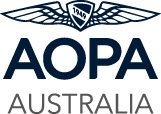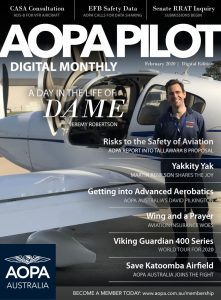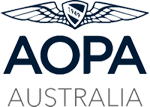On 1st April the Deputy Prime Minister and Minister for Transport, Michael McCormack announced a plan to increase VET Fee Student Loans to assist with the cost of aviation flight training, but it was no joke.
Minister McCormack said the higher limit will come into force from January 2020 and will help students cover the costs to complete multiple aviation courses required to be a commercial pilot. He said that Aviation students planning to become commercial pilots have been given a massive boost to their career prospects.
However, what might seem at face-value to be a generous increase to boost aviation training support, actually doesn’t address the dire need of Australia’s small-to-medium flight training businesses (that operate under Part 141 and 142 regulations) and their calls for badly-needed regulatory reform.
Ben Wyndham, AOPA Australia Board Member and owner of Airspeed Aviation, said that the recent announcement by Minister McCormack is a band-aid solution that does nothing to address the needs of smaller flight training enterprises.
“It will only benefit the larger, well-funded training colleges, while smaller flight-training schools continue to wait for desperately needed regulatory reform to lower the cost of burdensome compliance impacting schools like AirSpeed Aviation.”
Minister McCormack said that Australia needs more people in aviation, particularly women, and that the government is investing to help attract the skills we need for the future, stating;
“We’ve listened to the concerns from industry that the current combined lifetime loan limit of $104,440 doesn’t adequately cover the cost of training for the licences and ratings issued by the Civil Aviation Safety Authority.
“That’s why the cap will be lifted to the same level as courses for medicine, dentistry and veterinary science.
“Airlines advise the current shortage of experienced pilots, in part driven by the boom in aviation across the Asia-Pacific, is causing flight cancellations and delays.”
Ben Morgan, Executive Director of the Aircraft Owners and Pilots Association (AOPA), said that the funding announced by Minister McCormack did nothing to address the root causes of rising costs in flight training.
“AOPA Australia is supportive of increasing the student loan scheme. That said, the announacment as a gift by the government to large corporate multi-national schools and a suicide note for small to medium sized operations, who are all currently struggling and unable to resource the excessive capital required to uplift their operations to an approved RTO provider so as to qualify for access to student loans.
“The increased funding will serve to make the larger RTO flight training schools far more powerful and dominant, leaving small to medium sized operations (that make up the majority of the general aviation industry) unable to compete in a market where students will clearly preference taking loans over paying up front. Intended or not, the Minister is driving a further wedge into the market that will only serve to further damage the flight training industry.
“What the industry desperately needs is genuine reform of the CASA 141/142 regulations framework to simplify and streamline the operations of flight schools, which will help lower the increasing costs that are being passed onto students.
“Further, the entire RTO and student loans scheme needs to be overhauled top-to-bottom to ensure that all CASA approved flight training schools have immediate access without the excessive application and approval constraints.
“The government needs to create a Flight Trainiing VISA that allows foreign students to travel to Australia to undertake flight training at any approved CASA school, which would then enable small to medium sized CASA Part 141/142 flight schools to take advantage of the growing international student market, which is currently dominated by CRICOS approved schools only.
“The solutions to the flight training industry’s problems are available to the Minister now, yet he does not appear to be listening. Unfortunately, what we have received on the 1st of April is a blatent pork-barrel band-aid engineered for an election and ignorant to the true underlying problems causing our industry harm. If the Minister is genuine about addressing the challenges facing general aviation, maybe he should find new advisors.
The new, higher VET FEE loan limit is designed to benefit tertiary students who will undertake or are currently undertaking an aviation course at diploma or advanced diploma level, and deferring their tuition fees through VSL. This will apply for training that leads to outcomes such as acquiring a CASA commercial pilot licence, instrument and multi-engine ratings.
The initiative responds to a recommendation from a skills study conducted by an expert industry panel last year. It follows a $4 million injection from the government in March into programs to attract more women into aviation careers.
[adrotate banner=”3″]






